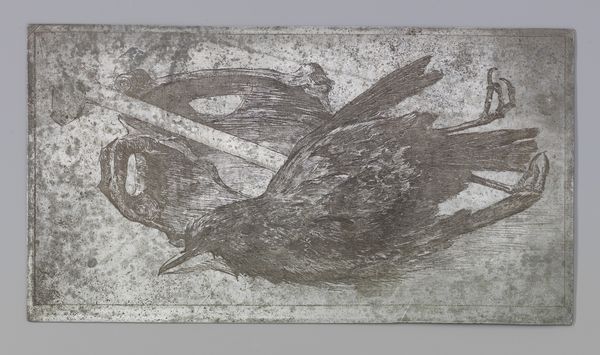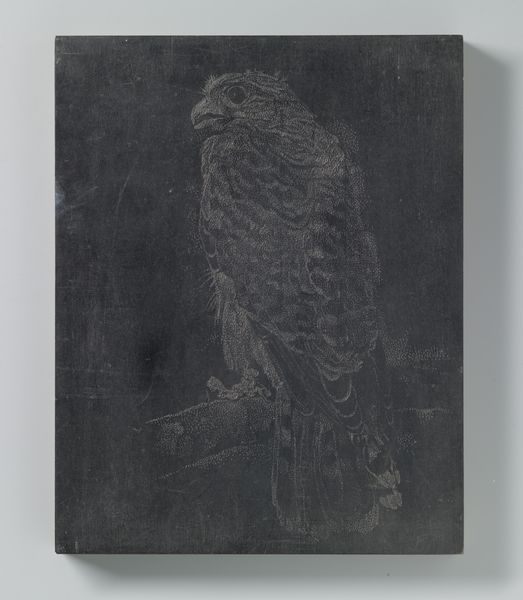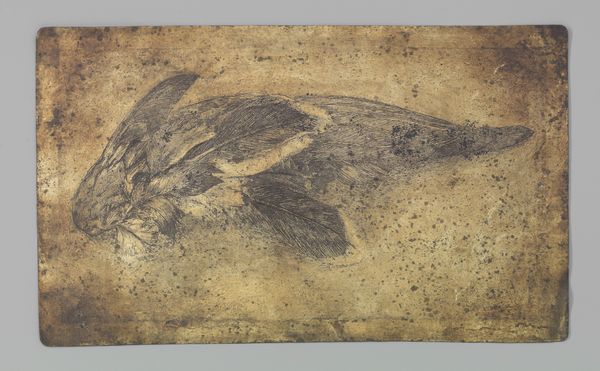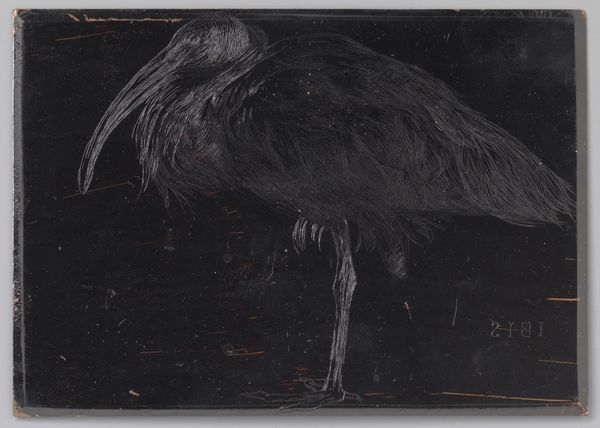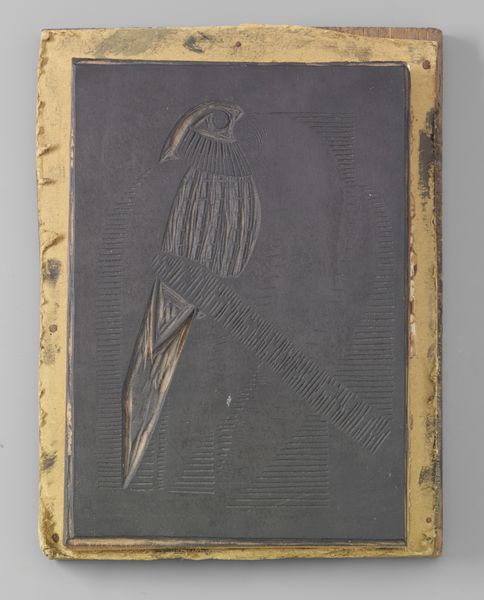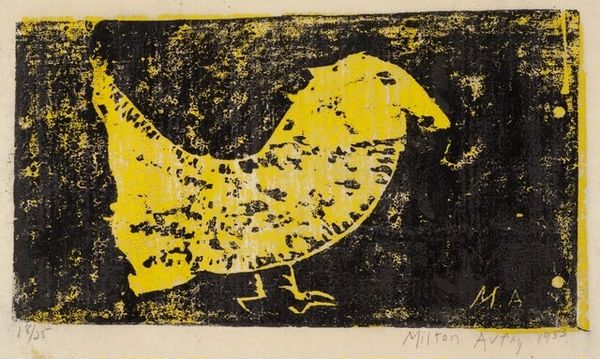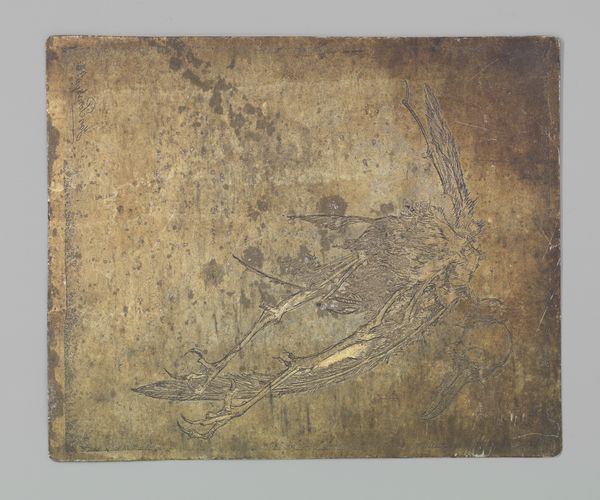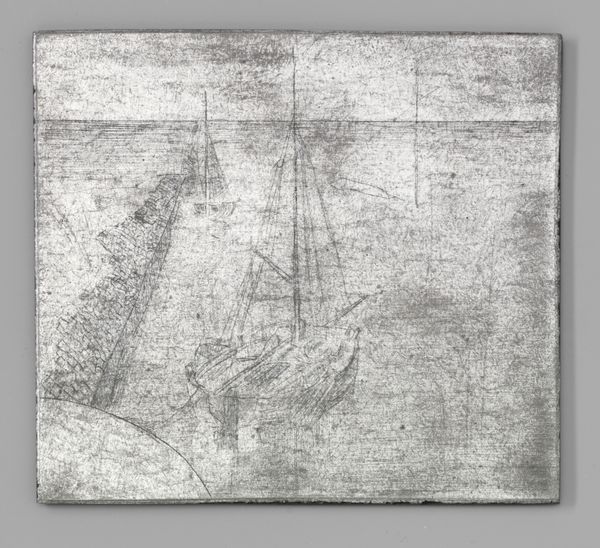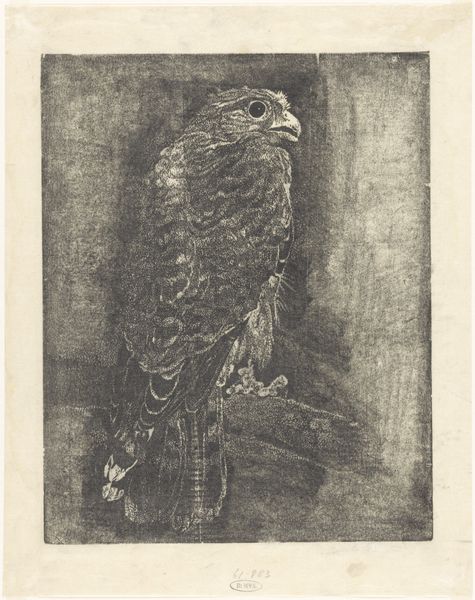
drawing, print, graphite
#
drawing
# print
#
pencil sketch
#
graphite
#
watercolor
#
realism
#
monochrome
Dimensions: height 210 mm, width 252 mm
Copyright: Rijks Museum: Open Domain
Curator: "Dode Vogel," or "Dead Bird," a graphite and watercolor drawing by Jan Petrus Ponstijn, created sometime between 1940 and 1948. Editor: What strikes me immediately is the overwhelming feeling of quiet stillness emanating from such delicate rendering. Curator: Note how Ponstijn's masterful use of monochrome adds depth. See how he builds volume and weight with varied textures rather than color to focus on line and form. Editor: Indeed. The dead bird itself, rendered in somber greys, acts as a potent emblem, don’t you think? Birds so often signify freedom, flight, even the soul. Here, that symbolism is inverted—its a stark memento mori. Curator: Interesting. Look at the formal relationship between the bird's body and the negative space surrounding it. The rigid rectangular composition perfectly constrains the organic shape of the fallen bird. Editor: It reminds us of how we, too, are constrained, ultimately. Perhaps the work points towards the anxieties and uncertainties of the wartime era. A fallen symbol perhaps reflecting human vulnerabilities and death during wartime? Curator: We cannot ignore the material decay either: there's a compelling tension between realism and the ravages of decomposition visible in the textural layers within. Editor: Ponstijn has undeniably crafted an image pregnant with historical context through a subject we find instinctively, perhaps universally, affecting. Curator: Ultimately, Ponstijn offers a study on light and shade and an exercise in representational aesthetics. Editor: Agreed. It serves to remind us about universal themes like mortality through this potent iconography.
Comments
No comments
Be the first to comment and join the conversation on the ultimate creative platform.
